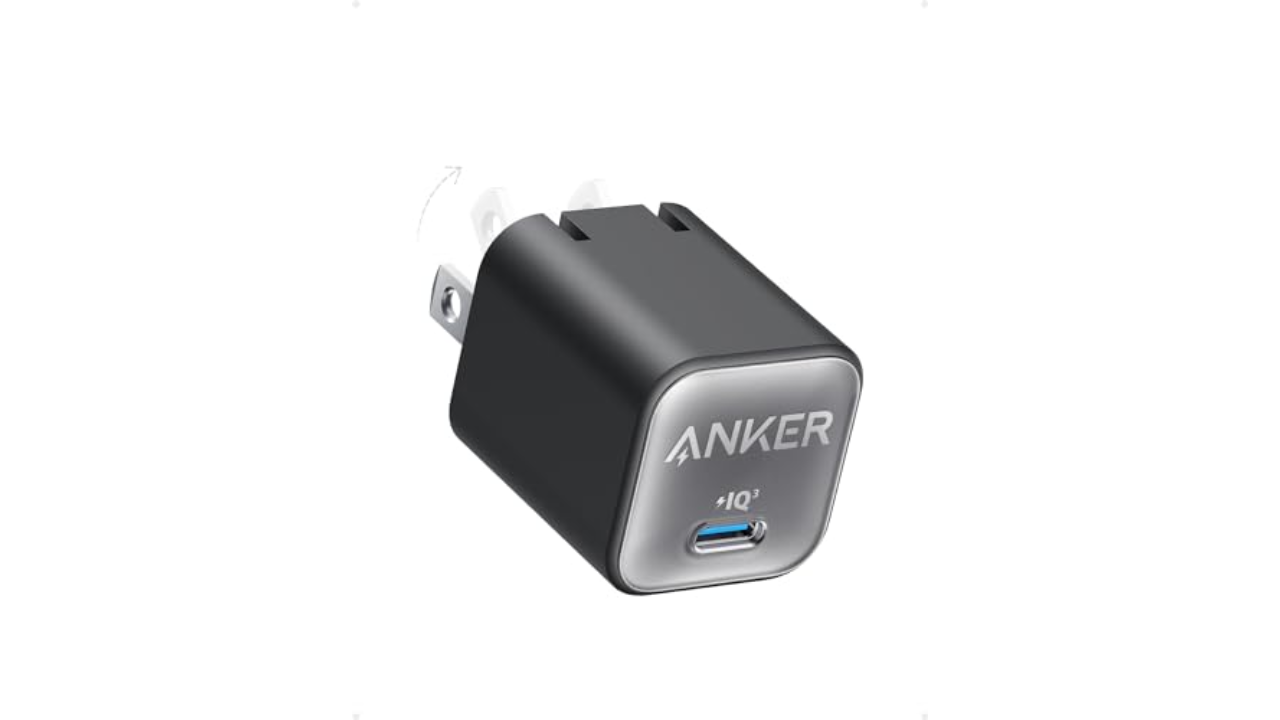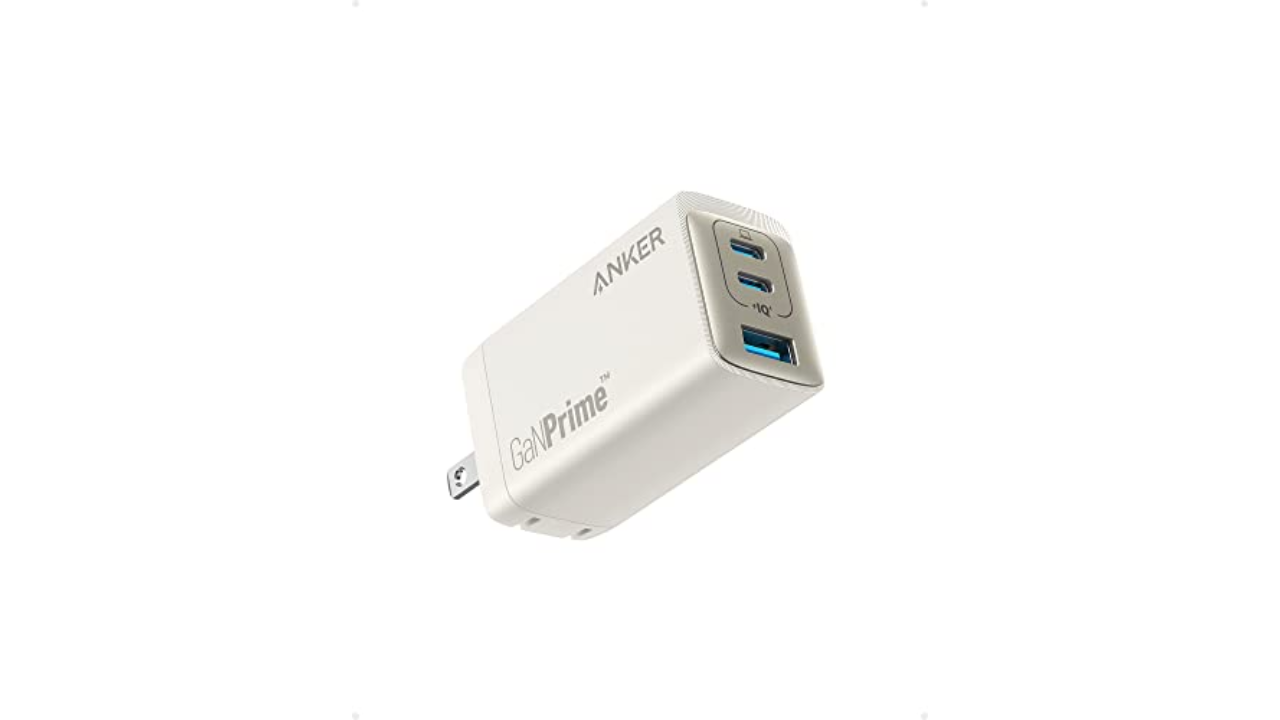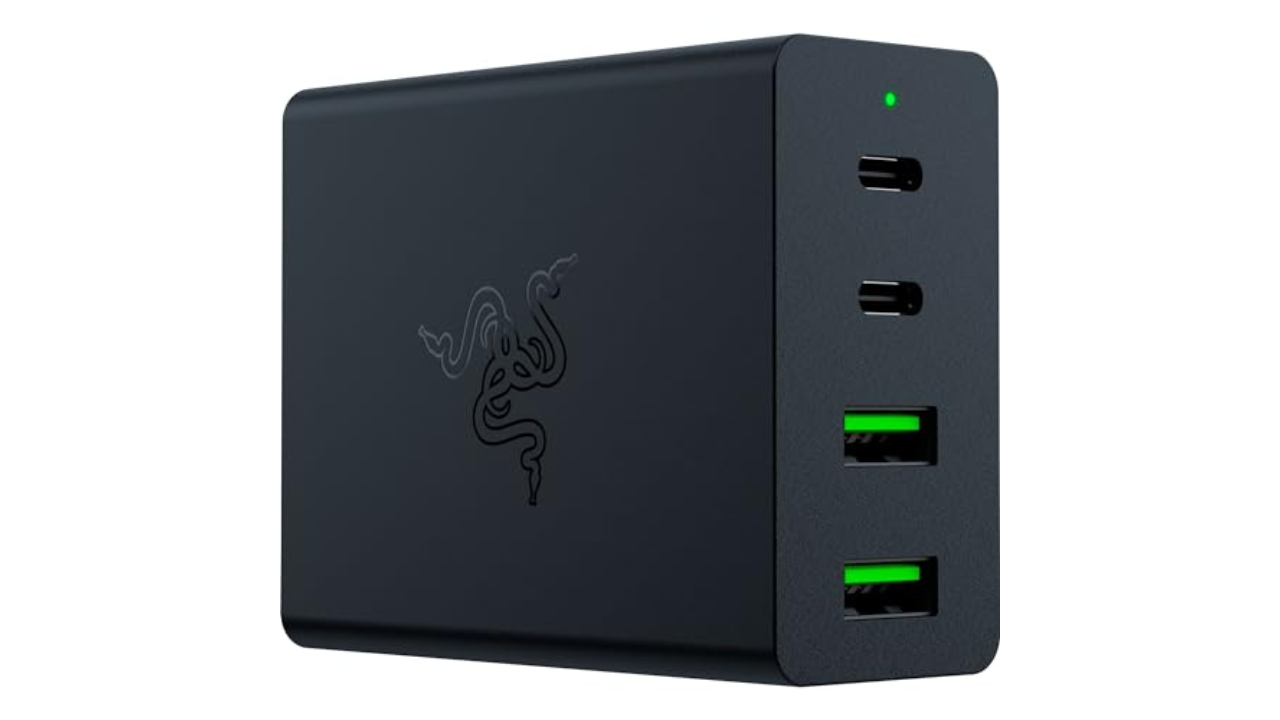It’s been a little because you’ve been in a position to get a USB telephone charger bundled with maximum untouched flagship smartphones. That suggests you if truth be told want to take into consideration which one you will have to get rather, and what kind of you wish to spend. However the shining facet is that, should you pick out the proper charging brick, it may function as a multi-purpose gadget that may govern up various units age additionally lowering how a lot tools you want to hold age touring.
That mentioned, before you purchase the rest, there are some noteceable issues to imagine. Are you in search of a quick charger strictly to pair together with your telephone, or do you wish to have one thing that may rate a pill or computer as smartly? On the other hand, if you wish to have one thing that may recharge a number of smaller gadgets, you want to know the way many you plan on powering up concurrently, as that may dictate the selection of ports you want. In spite of everything, some telephones like the ones from OnePlus help proprietary charging protocols which might be sooner than what you’ll get with usual USB-PD. And in the ones instances, you’ll be at an advantage with a first-party telephone charger. However without reference to what you want, Engadget’s checklist of the most productive speedy chargers will have to shield nearly any condition.
Essayist’s Word (April 2024): Month we’re nonetheless looking forward to extra untouched chargers to come back out so we will be able to do a complete replace to our information, some interesting choices have collision the marketplace not too long ago. On the finish of March, Pluggable introduced an ideal thin two-port 40W USB-C adapter that turns out like a superb journey significant other for preserving a telephone and a pill crowned up concurrently. One neat component is its subtle capability allocation tech, which permits the charger to dynamically shift how a lot juice every gadget will get to highest maximize potency.
In the meantime, for the ones in search of one thing beefier, UGreen exempted a complete untouched layout of gadgets. Essentially the most noteceable of those is a 160-watt GaN charger, that includes 4 ports (3 USB-C and one USB-A) that may fracture capability output between more than one gadgets directly or rate one computer at as much as 140 watts. This offers UGreen’s brick a ton of flexibleness age nonetheless having the ability to replenish even a beefy 16-inch MacBook Professional at govern pace. On the other hand, Satechi’s actual 145w charger offer homogeneous (even though quite decrease) capability output and is derived with an collection of global plug adapters, which is usually a actual luxurious for usual vacationers. However in all probability most significantly, either one of those gadgets price $40 to $50 not up to our tide favourite high-wattage charger (Razer’s 130W GaN adapter), so we’re having a look ahead to trying out those out in additional intensity quickly.
How we examined
The method for my speedy charging experiment is meant to be as simple as conceivable. I tired every gadget to ten % battery, plugged in an influence brick and after recorded the volume of rate added each and every 10 mins for an era. Every adapter used to be plugged without delay into a regular 120-volt outlet (with out the usefulness of an influence strip or any extension cords), and when conceivable I worn the cable that both got here incorporated with the battery charger or one made by means of the similar producer because the gadget. If that wasn’t an choice, I worn qualified 100-watt USB-C cables made by means of Anker, Apple and others.
For the reason that charging fee for gadgets varies relying on how a lot juice you might have, I sought after to measure how smartly every adapter used to be in a position to check every system’s optimum charging pace. Normally, charging is slower between 0 and 20 % ahead of speeds ramp up till the battery hits 80 %, at which level issues decelerate once more to give protection to and saving the condition and longevity of the facility cellular. For charging stations with more than one ports, I all the time decided on the port with the very best capability output age additionally no longer having more than one gadgets attached.
As for the gadgets themselves, I decided on an Apple iPhone 13, a Samsung Galaxy S22 Extremely, a Nintendo Transfer (a starting fashion from 2017), a 2021 Dell XPS 13 and a 16-inch M1 Max MacBook Professional. This collection used to be selected to shield a large field of capability attracts from 20 watts (iPhone 13) all of the means as much as 140 watts (M1 Max MBP). Additionally, each and every gadget used to be examined age lazy (i.e. refuse spare apps or video games operating) to deliver to safeguard constant effects.
One noteceable factor to notice is that age the USB Implementers Discussion board has authorized help for USB Energy Supply (USB-PD) charging at as much as 240 watts, adapters that if truth be told help that capability output don’t exist but. Moreover, age there are a handful of cables that may deal with greater than 100 watts of juice, they’re fairly uncommon or juiceless to get.
What’s GaN?
When in search of chargers, chances are you’ll realize that some are marked as GaN, which stands for gallium nitride. That is an noteceable difference as a result of, in comparison to used adapters that usefulness silicon switches, GaN-based gadgets help larger capability potency and output, permitting producers to develop extra compact chargers that run cooler and help upper wattages. Relying at the particular capability output, GaN chargers may also be 30 to 50 % smaller and lighter than silicon-based possible choices. That may no longer pitch like a lot, but if they’re sitting in a bag along a computer, telephone and any alternative equipment you could have, chopping indisposed on huge bulk and weight can travel a ways.
Chargers we examined
With such a lot of other chargers of various capability outputs to check, I destitute issues indisposed into 3 divisions. There are the 30-watt and underneath chargers, that are essentially designed for smartphones and alternative little cell gadgets. Later we proceed as much as 45 to 65-watt chargers (give or tug a watt or two) that may deal with such things as telephones along side various slim and luminous computers. In spite of everything, now we have chargers that output 100 watts or extra, that are just right for lovely a lot the rest but even so the most important and maximum power-hungry gaming computers. Many of those upper wattage adapters additionally component more than one ports, so are you able to govern up spare gadgets at complete pace. Alternatively, as a result of no longer each and every capability brick helps multi-device charging, I didn’t come with that as a trying out metric.
You’ll see a complete checklist of the chargers we examined under:


Anker
Choice of ports: 1 | Ports: USB-C | Dimensions: 1.12 x 1.12 x 1.39 inches | Compatibility: Telephones, pills, computers (restricted) | Cable: No longer incorporated
$20 at Amazon
In the case of charging little gadgets, 30 watts is by means of a long way probably the most pervasive because it covers maximum cellphones along side some greater gadgets just like the Nintendo Transfer. In our trying out, all the 30-watt chargers carried out similarly smartly, with every one in a position to get the iPhone to round 80 % battery rate in not up to an era age additionally utterly refilling the Galaxy telephone in 60 mins. Alternatively, as you’ll be able to see, those smaller, low-wattage bricks struggled to replenish each the XPS 13 and particularly the MacBook Professional. Sure, you’ll be able to do it, however it’s in lieu slow (the XPS 13 even surfaced a gradual charger notification), and since I examined every gadget age lazy, there’s a just right prospect those chargers won’t have the ability to secure those computers crowned up age underneath load.
Alternatively, the only factor that stands proud is the efficiency of Apple’s 20-watt brick, whose decrease output led to it to lag at the back of — each and every alternative adapter equipped sooner charging. Month it used to be in a position to secure up with rival gadgets when refilling the iPhone, its wattage is so low it couldn’t even trickle rate the XPS 13. Dell’s capability control didn’t even acknowledge {that a} charger used to be plugged in. That suggests this adapter is far much less helpful if you want to fast rate extra power-hungry units in a pinch. And I will have to point out I didn’t trouble trying out the worn 15-watt Apple capability cubes, which will’t even help the iPhone’s complete 20-watt charging speeds. Any individual nonetheless the use of a type of actually should improve.
If all you wish to have is an influence brick to secure little gadgets powered up, our selection for highest charger is sunlit: the Anker Nano. No longer most effective did it ship the most productive speeds in its magnificence, however it’s additionally the smallest, which makes it tremendous simple for it to vanish in a bag. The only we examined, the Anker 711 charger, is an used fashion at this level, however you will have to get the similar efficiency from the actual model, the 30W Nano 3.


Anker
Choice of ports: 3 | Ports: 2 x USB-C. 1 x USB-A | Dimensions: 2.6 x 1.51 x 1.15 inches | Compatibility: Telephones, pills, computers | Cable: No longer incorporated
$56 at Amazon
Right here’s the place issues begin to get attention-grabbing as a result of age various those chargers have homogeneous capability outputs (apart from the Samsung 45-watt brick, after all), the original effects had been a bit of extra various. Each the Nekteck and the Belkin most effective controlled to get the Galaxy telephone to round 80 % battery then an era, in comparison to the Anker, Samsung and Satechi chargers which all collision 100. This means that each chargers aren’t correctly speaking with Samsung’s telephone to deliver to benefit from its 45-watt charging speeds, which I used to be in a position to verify by means of the use of a USB-C volt meter. In the meantime, as anticipated, Samsung’s 45-watt charger did superb when attached to the Galaxy handset, however its decrease output supposed it might no longer secure up with the 60 and 65-watt bricks.
Quite strangely, each and every charger on this section carried out smartly when hooked as much as the XPS 13, with every adapter completing inside one % of every alternative (round 58 %) then an era. Alternatively, with regards to the thirsty MacBook Professional, each and every excess watt makes a excess, with the Anker 735 and Samsung Triple Port Charger edging out the contest, even if they’re nonetheless a lot slower than Apple’s incorporated brick. It’s additionally telling that at the Belkin 60W, its quickest charging port if truth be told denotes charging speeds of between 50 and 60 watts, which is why it couldn’t moderately secure up with the alternative 60-watt chargers I examined.
As for selecting a winner, Nekteck’s 60-watt brick is the most affordable age additionally being probably the most few choices that include an incorporated charging cable. Alternatively, with just a unmarried charging port and sub-optimal compatibility with the Samsung telephone, it’s juiceless to totally counsel. For my cash, I’d travel with the Anker 735 because it’s smaller, quite sooner and the similar worth as Samsung’s 65W Triple Port charger, age nonetheless providing a complete of 3 USB ports (two USB-C and one USB-A).


Razer
Choice of ports: 4 | Ports: 2 x USB-C, 2 x USB-A | Dimensions: 2.44 x 3.03 x 1.26 inches | Compatibility: Telephones, pills, computers | Cable: 2M Sort-C to Sort-C incorporated
$160 at Amazon
For any person taking into consideration a high-power USB-C speedy charger, right here’s the place it’s noteceable to concentrate on the advantageous print. Month all of those bricks are indexed at or above 100 watts, the main charging ports at the Satechi and Belkin are if truth be told capped at 90 or 96 watts. And that’s ahead of you imagine multi-device charging, which splits the whole output around the alternative ports with the ratio various relying at the particular fashion.
Throughout trying out, all 4 had refuse factor topping up the smartphones, the Transfer and the XPS 13, even though as soon as once more Belkin’s adapter couldn’t totally recharge the Galaxy telephone regardless of having greater than plenty wattage. At the turn facet, age Razer’s USB C charger has a better max output than both the Belkin or the Satechi, there wasn’t a lot excess in charging speeds when attached to the MacBook Professional. And this isn’t because of a dearth of upper wattage cables, as each USB-C ports at the Razer brick are capped at a mixed 100 watts.
In the meantime, as probably the most uncommon 140-watt capability adapters in the marketplace, Apple’s brick is tremendous fast and did an expectedly superb task of refilling the MacBook Professional. Alternatively, I will have to point out that it’s the one capability brick on this area that includes a unmarried port, which more or less seems like a overlooked alternative for the Apple ecosystem.
So for any person that desires a charger that may govern up an ultraportable computer temporarily age nonetheless having juice to supplementary, I favor Razer’s 130-watt GaN adapter. It’s the most productive charger on this section, in addition to the smallest and most costly at $180. On govern of that, it comes with two global wall adapters (for UK and EU retailers) and a braided 100-watt USB-C cable, all of which you don’t get from any others on this section.
Wrap-up
Clearly, there are countless extra than simply 14 tremendous speedy chargers in the marketplace, and unfortunately I don’t have the date to check all of them. At the moment, discharging a telephone from 100% battery to useless can tug upwards of 15 hours, so relying at the gadget, I will be able to most effective check one USB telephone charger consistent with pace. Simply accumulating all this information took the easier a part of two months. And sadly, age I used to be operating this check, Anker got here out with a untouched while of capability adapters that I haven’t had the prospect to judge simply but.
That mentioned there are nonetheless some noteceable takeaways. First, to deliver to safeguard optimum charging speeds, manufacture positive your charger can provide the right kind quantity of capability. Producers generally checklist a tool’s max charging speeds, age capability adapters obviously label their USB varieties and outputs. And when in unsureness, you’ll be able to have a look at the advantageous textual content at the charger itself, even though you could have to do a little math. Simply take note, watts equals volts occasions amps. Moreover, in terms of adapters with more than one ports, you’ll take a look at to peer how its general wattage is fracture when attached to more than one gadgets.
Later there are alternative elements like dimension and weight you’ll wish to imagine, with more moderen gallium nitride adapters (GaN) continuously that includes extra compact designs and higher capability potency. And should you’re ever in reality in unsureness, you’ll be able to merely choose for a quick charger made by means of the similar corporate as your telephone, computer or alternative units, one thing that’s very true for gadgets just like the OnePlus 10T that component rapid proprietary charging protocols.











